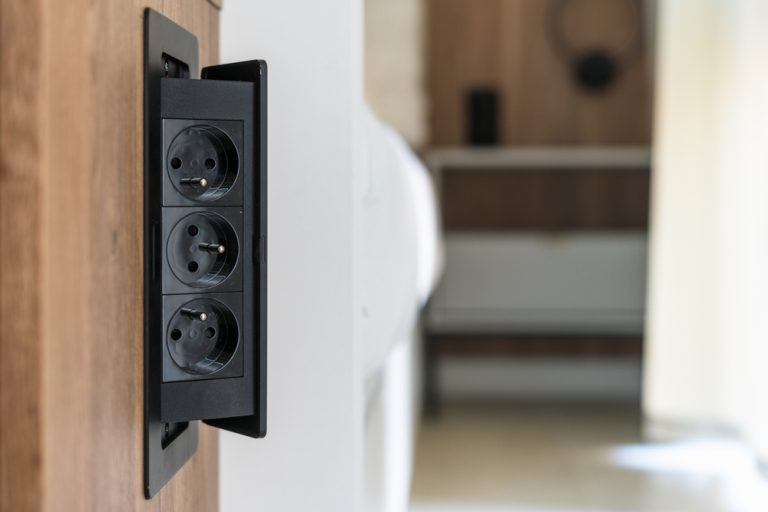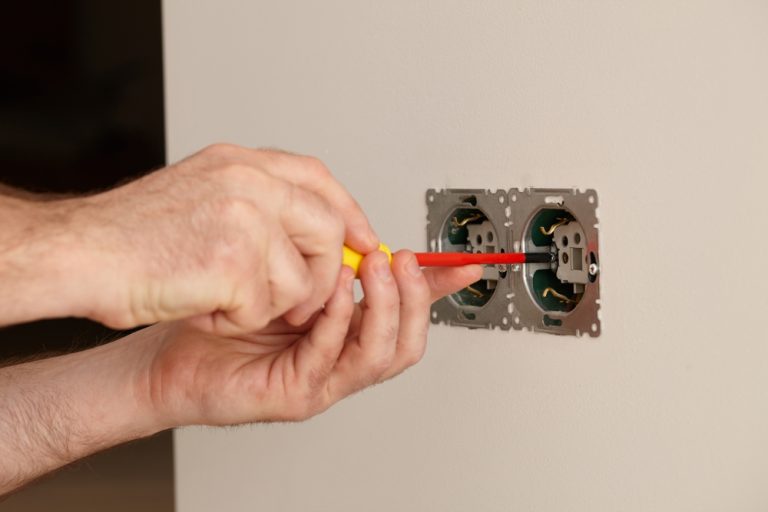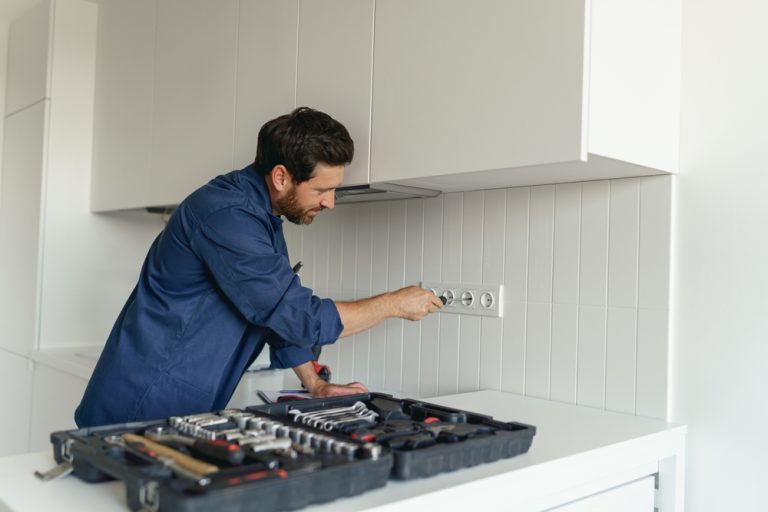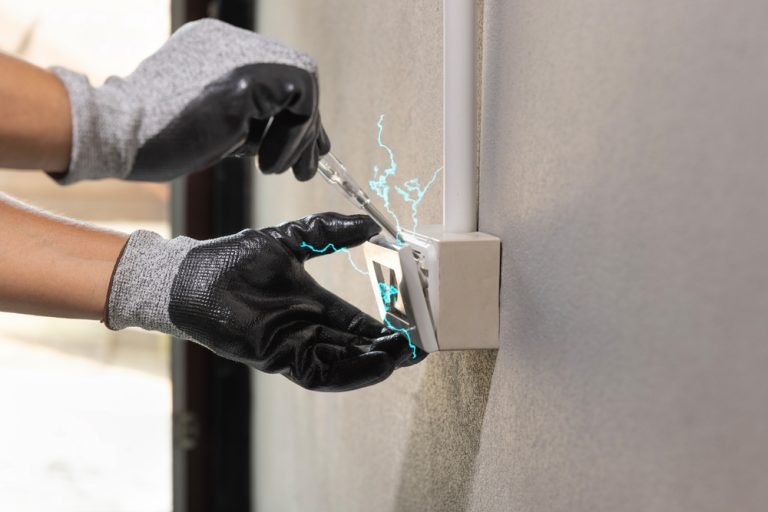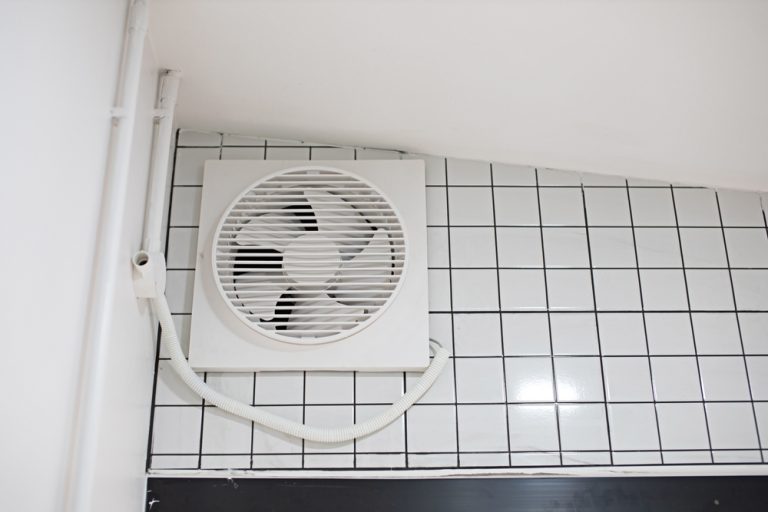Do Kitchen Islands Require Electricity?

Kitchen islands have become a popular feature in modern kitchens, offering additional counter space, storage, and even seating. But as homeowners look to add functionality to their islands, the question often arises: do kitchen islands require electricity? The answer depends on how you plan to use your kitchen island.
In this blog, we will explore the different purposes of kitchen islands, when electricity is necessary, and how to integrate electrical outlets safely and efficiently into your island design.
When Do Kitchen Islands Require Electricity
Not all kitchen islands require electricity, but it becomes necessary if you plan to use your island for specific functions. Here are some common reasons why your kitchen island might need an electrical connection:
Powering Appliances
One of the most practical reasons to add electricity to your kitchen island is to power appliances. If you intend to use small kitchen gadgets such as blenders, toasters, or food processors, having built-in electrical outlets will make the space more functional. In this case, having access to electricity is not just convenient—it’s essential.
Installing a Cooktop or Oven
If your kitchen island will house a cooktop, oven, or other built-in cooking appliances, electricity is a must. Electric stoves or induction cooktops require dedicated circuits to operate safely. Even gas-powered cooktops need electricity for igniters and other controls.
Lighting and USB Ports
Kitchen islands are often the centerpiece of the room, and proper lighting is crucial for both aesthetics and functionality. If you want pendant lights above your island or built-in lighting in the island itself, you will need electricity. In addition, many modern islands now feature USB ports for charging devices, which also requires an electrical connection.
Local Building Codes and Electrical Requirements
Before installing electrical outlets in your kitchen island, it’s important to check your local building codes. Most regions have specific electrical requirements for kitchen islands to ensure safety and compliance with regulations. The National Electrical Code (NEC) in the U.S., for example, requires that kitchen islands have at least one electrical outlet if the island is a certain size.
Why Building Codes Matter?
- Safety First: Building codes ensure that electrical installations are safe and reduce the risk of electrical shocks, short circuits, or fire hazards.
- Resale Value: Adhering to local building codes can also affect the resale value of your home. If your kitchen doesn’t meet electrical standards, it may cause issues during home inspections.
General Electrical Requirements for Kitchen Islands
The NEC typically requires that islands over a certain length (often around 24 inches) have at least one electrical outlet. Additionally, the outlet must be GFCI (ground fault circuit interrupter) protected, which is essential for any outlet in a kitchen due to the proximity to water.
Planning Electrical Outlets for Kitchen Islands
Understanding do kitchen islands require electricity is just the first step. Planning the placement of electrical outlets is equally important to ensure your island remains functional and visually appealing.
Outlet Placement Considerations
When deciding where to install electrical outlets in your kitchen island, think about how you’ll use the space. Common locations for outlets include:
- Side Panels: Installing outlets on the side panels of the island is a common practice, making them accessible but unobtrusive.
- Under the Countertop: For a more discreet option, you can install outlets just beneath the overhanging countertop. This keeps them out of sight but still easy to reach when needed.
- Pop-Up Outlets: If you prefer a clean, uninterrupted island surface, pop-up outlets are a sleek and modern solution. These outlets remain hidden when not in use but can be raised when you need them.
Number of Outlets
In addition to placement, think about how many outlets you’ll need. One outlet may suffice for smaller islands, but larger islands used for cooking, baking, or entertaining may require multiple outlets to accommodate various appliances and devices.
Benefits of Having Electricity in a Kitchen Island
Knowing do kitchen islands require electricity and understanding how to implement it can offer several practical benefits, turning your island into a multi-functional space.
Increased Convenience
Having access to electricity directly on your kitchen island enhances convenience, especially when preparing meals or baking. Instead of stretching cords across the kitchen to reach a wall outlet, you can plug in appliances directly on the island, making cooking and clean-up easier.
Improved Aesthetics and Lighting
Many homeowners add pendant or recessed lighting above the kitchen island, which creates a more inviting and well-lit workspace. Installing electricity also allows for decorative lighting, which adds to the overall ambiance of the kitchen.
Entertainment and Tech Integration
If your kitchen island doubles as a breakfast bar or dining space, having outlets allows you to plug in laptops, tablets, or even a sound system for entertainment while you cook or entertain guests. USB ports built into the island are also convenient for charging phones and other devices.
Challenges of Adding Electricity to Kitchen Islands
While there are many benefits to adding electricity to your kitchen island, there are also some challenges to consider.
Cost of Installation
Installing electricity in a kitchen island requires a licensed electrician and involves running wiring from your main electrical panel to the island. This can be a costly process, especially if the island is located far from existing electrical outlets.
Disruption During Installation
If you’re retrofitting an existing island with electrical outlets, installation may require cutting through flooring or countertops, which can cause disruption to your kitchen layout and daily routine.
GFCI Outlet Protection
As mentioned earlier, kitchen islands are subject to specific electrical safety codes. GFCI protection is required for any outlets in the kitchen, especially in areas near water. Installing GFCI outlets is crucial to preventing electrical shocks but may add to the overall cost of the project.
Do All Kitchen Islands Require Electricity?
It’s worth noting that not all kitchen islands require electricity. If your island is purely used for additional counter space, storage, or as a seating area, you may not need to install outlets. However, if your kitchen island serves as a central hub for cooking, cleaning, or entertaining, then electricity becomes an essential component.
Alternatives to Electric-Powered Islands:
For those who don’t need electricity but still want functionality, consider adding:
- Built-in shelving or storage: This provides extra space for kitchen essentials without needing electrical power.
- Portable appliances: You can use battery-powered or manual appliances that don’t require an electrical outlet.
Conclusion
So, do kitchen islands require electricity? The answer depends on how you plan to use your island. If you need it for powering appliances, installing lighting, or tech integration, then adding electrical outlets is a must.
Ensure you follow local building codes and work with a licensed electrician to plan the proper outlet placement and number of circuits needed. With the right planning, your kitchen island can become a functional and efficient workspace that enhances both the style and usability of your kitchen.

